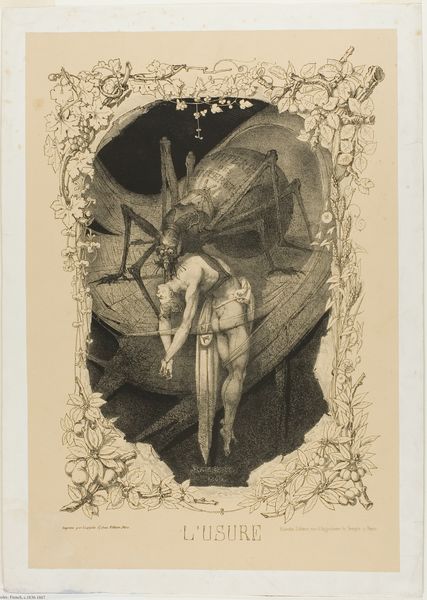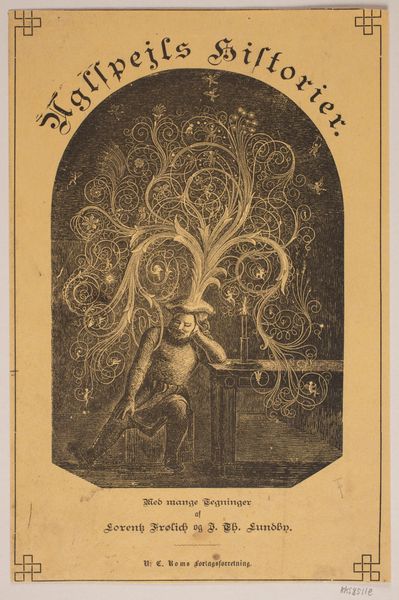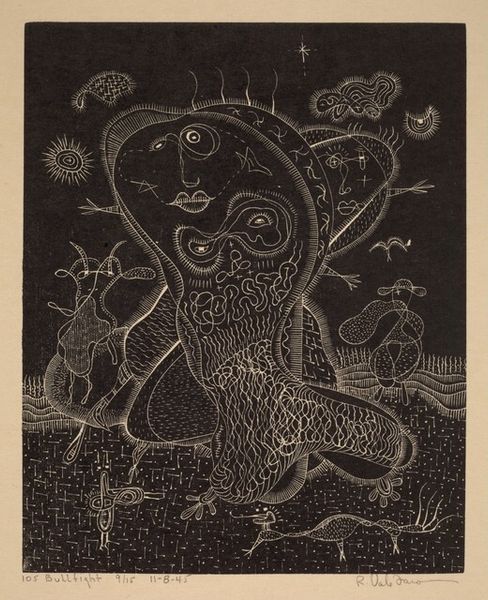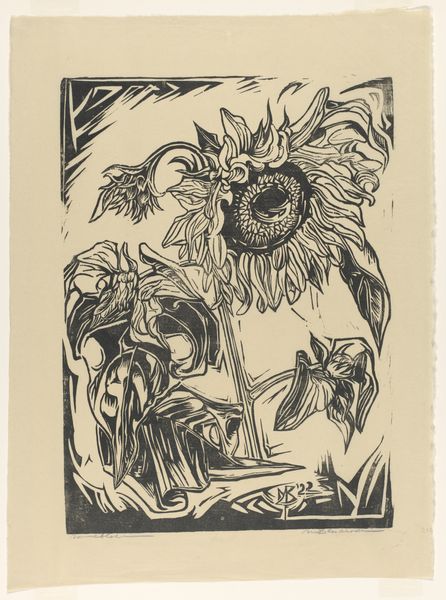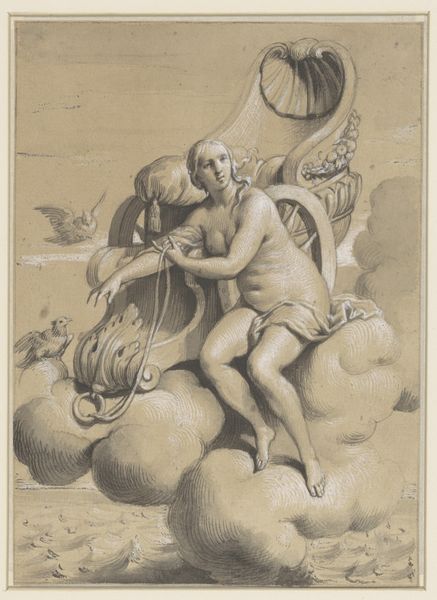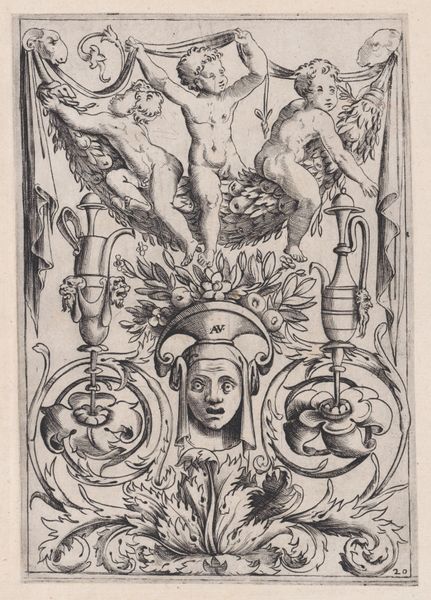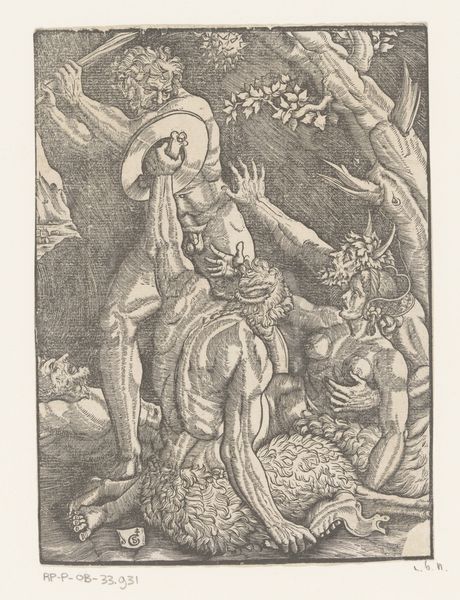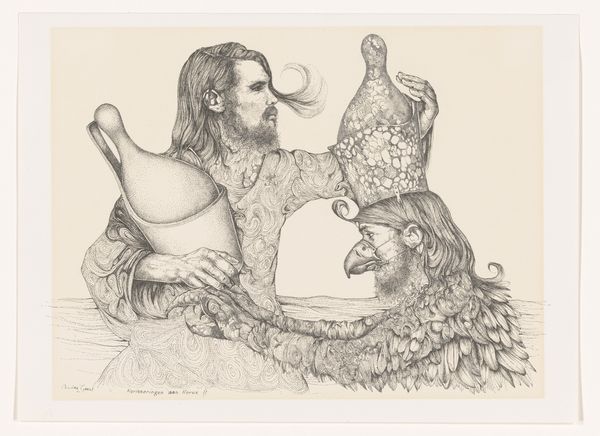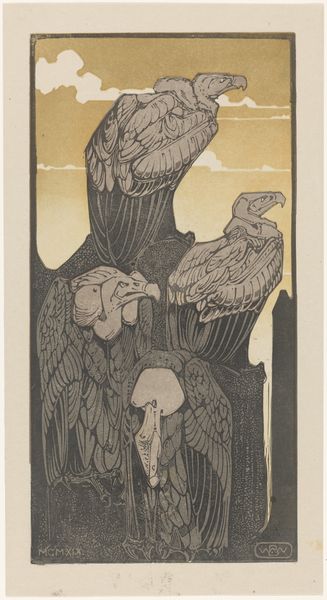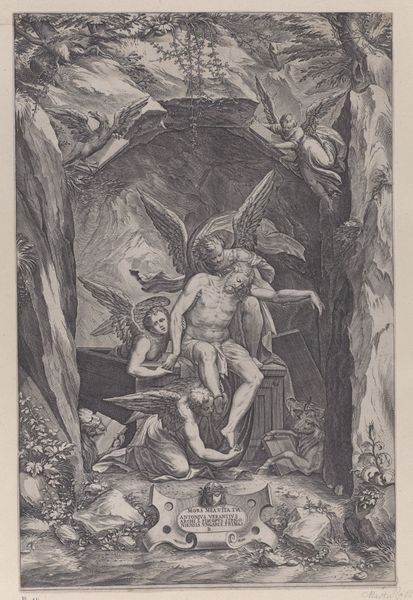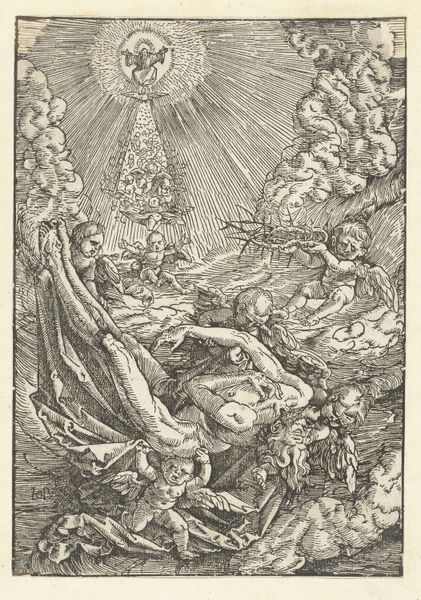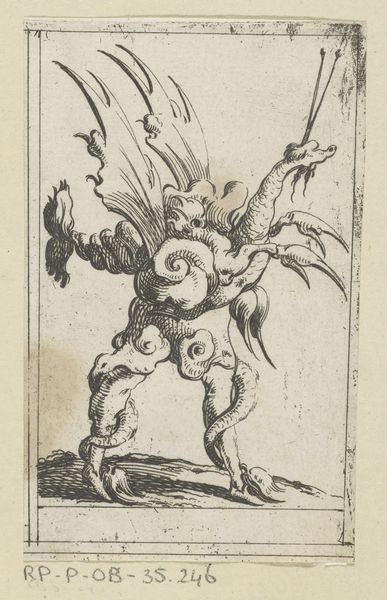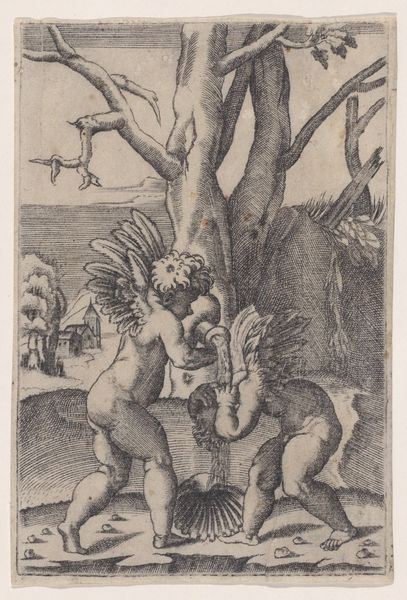
drawing, print, etching, ink
#
drawing
#
allegory
# print
#
etching
#
figuration
#
ink
#
symbolism
Copyright: Public Domain
This is Hans Thoma's 'Ex libris August Rasor', an etching intended as a bookplate, but its symbolic content goes far beyond mere identification. Made in Germany, this print presents a peculiar scene: a bearded merman emerges from the waves, struggling to hold aloft an enormous clamshell in which two cherubic figures play. It's a curious blend of classical and romantic imagery. The merman may be a nod to ancient mythology, while the cherubs evoke a Renaissance sensibility, all combined with the late nineteenth-century German interest in folklore and the mystical. Such imagery reflected the cultural milieu of the time. Germany was undergoing rapid industrialization, and art often provided an escape into a world of myth and legend. Bookplates, in particular, became a marker of personal identity and cultural refinement for the rising middle class. To fully understand this artwork, scholars might explore the literary and artistic trends prevalent in Germany, focusing on the revival of interest in classical and mythological themes.
Comments
No comments
Be the first to comment and join the conversation on the ultimate creative platform.
